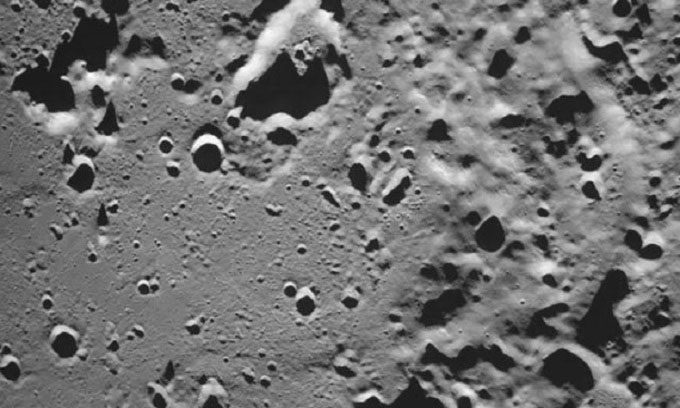Russia’s First Lunar Mission in 47 Years Ends in Failure as Luna-25 Spins Out of Control and Crashes on the Moon’s Surface.

The first image of the Moon’s surface taken by Luna-25. (Photo: Roscosmos)
The Russian space agency Roscosmos announced that it lost contact with the Luna-25 spacecraft at 6:57 PM on August 19 (Hanoi time) when the spacecraft experienced issues while entering its orbit before landing, Reuters reported. Luna-25 was scheduled to land on the Moon on August 21. “The spacecraft was moving in an unpredictable trajectory and ceased operations due to a collision with the Moon’s surface,” Roscosmos stated.
Roscosmos has established a special internal committee to investigate the reasons behind the Luna-25 mission failure, marking Russia’s return to the lunar race. The collision highlights Russia’s regression since the Cold War, when it became the first nation to launch the Sputnik 1 satellite into Earth orbit in 1957 and cosmonaut Yuri Gagarin became the first person to travel into space in 1961. Luna-25 was Russia’s first lunar mission since Luna 24 in 1976.
Russia is competing with India, which has also launched a spacecraft to the Moon’s southern pole. According to the Indian Space Research Organisation (ISRO), Chandrayaan-3 is expected to land on the Moon on August 23. Russian authorities hope that the Luna-25 mission could reaffirm Russia’s strength in the space sector.
Russian scientists have repeatedly complained about the poor capabilities of space program managers, citing many unrealistic projects. Over a decade ago, the failure of the 2011 Fobos-Grunt mission to one of Mars’ moons highlighted the challenges facing Russia’s space program. The spacecraft couldn’t even leave Earth orbit and fell into the Pacific Ocean in 2012.
In the early 2010s, Russia proposed the idea of the Luna-25 mission to the Moon’s southern pole. While Luna-25 successfully left Earth orbit, its failure means that Russia may not be the first country to retrieve frozen water samples from the polar region.


















































